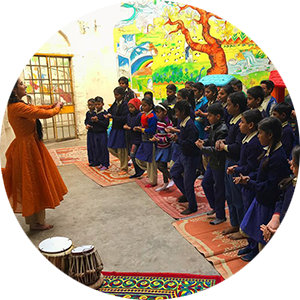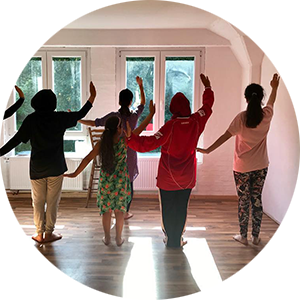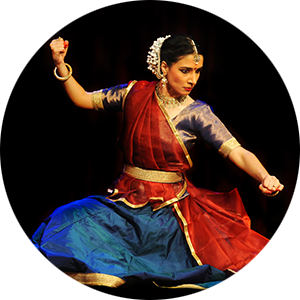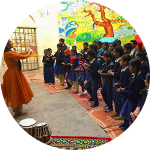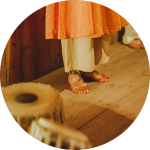
Kathak
North Indian Classical Dance – Kathak Courses
New Courses 2023
| Course | Start | End | Day/Time | Lesson Unit | Level | Participants | Price | Possible start |
|---|---|---|---|---|---|---|---|---|
| Course 1+2 (combined) | 04.01.24 | open | Thu. 5.15pm | 60min | Kathak for kids / adolescents | max 8 | 57,50 € monthly | ongoing |
| Course 3 | 04.01.24 | open | Thu. 7pm | 90min | Kathak for adults - Beginner | max 8 | 71,50 € monthly | ongoing |
| Course 4 | 04.01.24 | open | Thu. 7pm | 90min | Kathak for adults - intermediate | max 8 | 71,50 € monthly | ongoing |
About Kathak
Kathak is a highly dynamic, energetic, graceful, abstract and narrative dance that unites music, movement and theater in a unique way. Kathak, the classical dance of North India, has enriched and transformed itself like no other dance of this country through different cultural influences. Kathaks origin goes back to 400 BCE, when it was held as a ceremony to worship the gods in the Hindu temples. At that time Kathak was an offering to the gods, but also a storytelling medium for portraying the epic tales of Mahabharata and Ramayana. The influence of muslim rulers in India transformed North Indian arts. Kathak evolved from a purely narrative temple dance into a highly rhythmic, dynamic and expressive dance that uses the whole body as a narrative medium. Kathak is a highly stylized dance which follows strict rules, but demands a lot of spontaneity and improvisational skills from the dancer at the same time.
Learn Kathak at the GMA
Ghazal Ramzani teaches the Jaipur style of the Kathak as taught by Pt. Rajendra Gangani. The Jaipur style of Kathak gives great importance to physicality and body control, endurance and dynamics, complex footwork and rhythmic-musical knowledge as well as a nuanced Abhinaya (expression). Ghazal Ramzani’s pedagogical research is currently dedicated to the anatomy of Kathak. She endeavors to analyze the anatomy of Kathak and to develop innovative methods of dance mediation. Her dance lessons are a combination of classical technic practice as well as improvisation exercises based on Kathak’s dance vocabulary and principles. Those improvisation exercises allow a creative approach to movement, space, music and body. The classes are musically accompanied by Ghazal on tabla and harmonium.
Just ask us!
At the Global Music School we want to expand our dance department. For this we are in contact with various qualified teachers. However, the expansion of our dance department also depends on the demand. Therefore, if you are looking for instruction in other dance styles, let us know. We will gather the interested parties and bring you into contact with our teachers.


